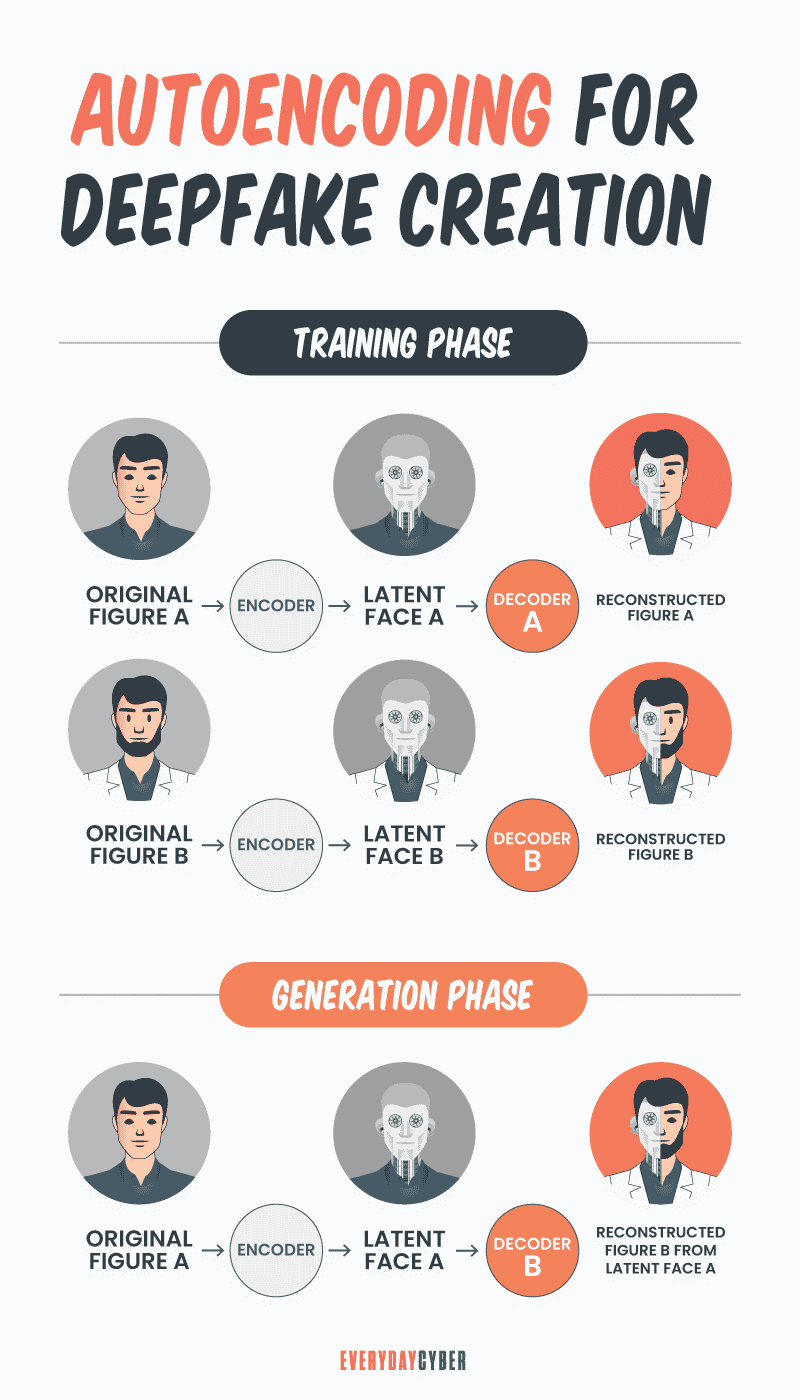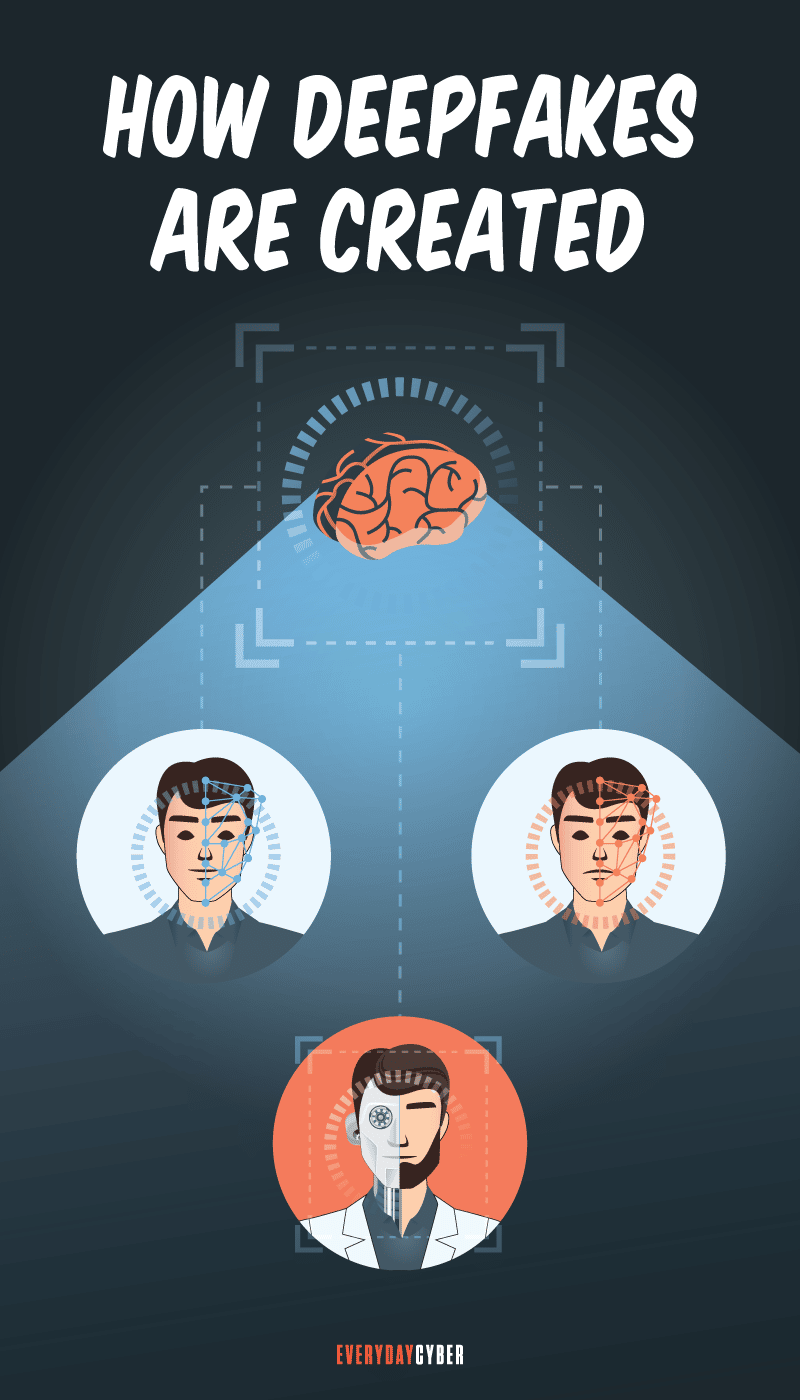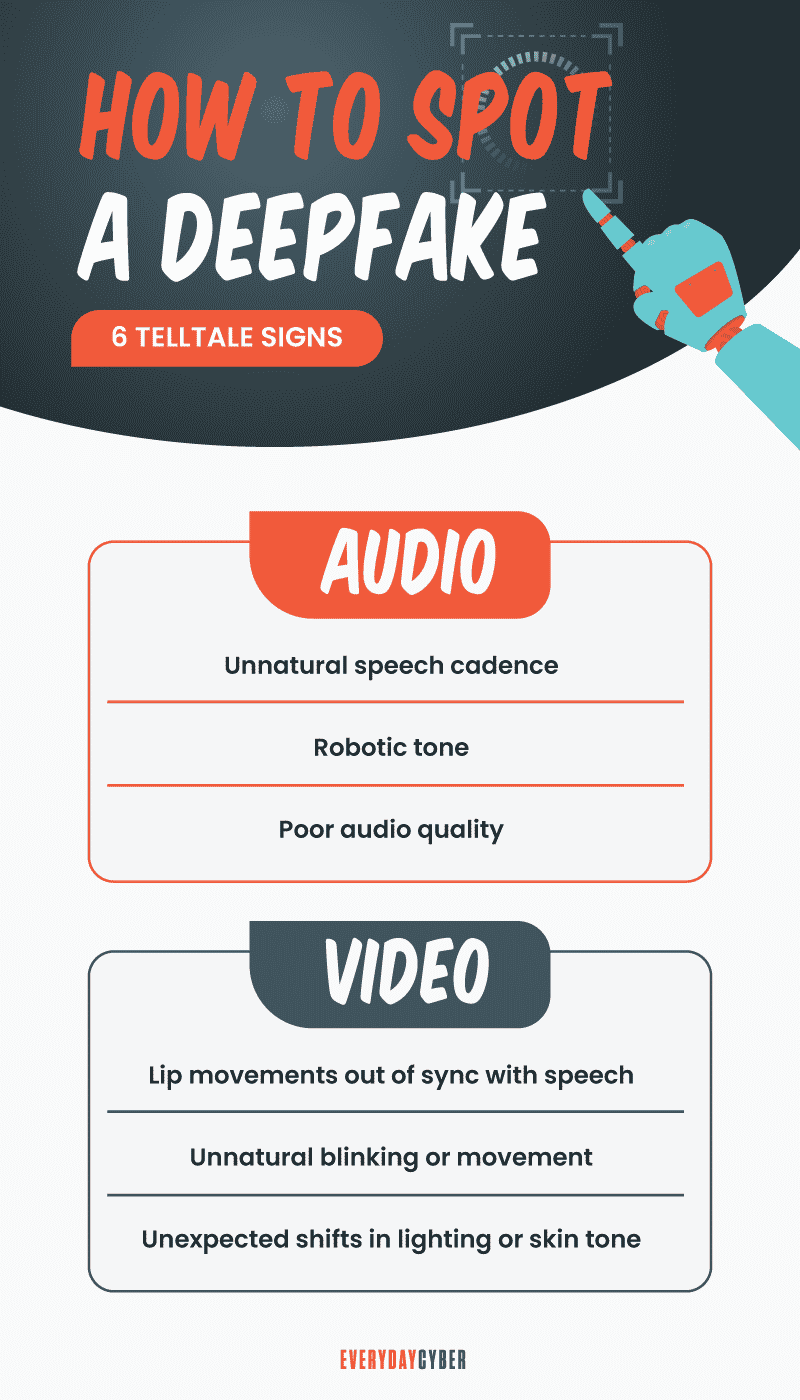Artificial intelligence has been growing rapidly. It has done much to improve the quality and efficiency of many industries and our daily lives.
However, not all AI creations are beneficial to society. Some technologies are developed that are later exploited by criminals.
People can easily be fooled into believing they are seeing or hearing something that has no basis in truth in a culture filled with misinformation and deception. Deepfake videos have added to the uncertainty. Many are intended to trick the viewer or misrepresent the person in the video. Deepfake videos have forced viewers to wonder whether or not what they are seeing or hearing in a video or audio recording is real.
What is a Deepfake Video?
A deep fake video is a video in which a person’s face or body has been digitally altered to make them appear to be someone else. It’s usually used maliciously or to spread misinformation.
The term “deepfake” is derived from the underlying AI technology of “deep learning.” Deep learning algorithms are used to swap faces in video and digital content to create realistic-looking false media. Deep learning algorithms train themselves on how to solve issues when given vast volumes of data.
“Deepfake” is a combination of “deep learning” and “fake.” The “deep” part of the deepfake definition refers to deep learning, which is a method of teaching computers to think naturally like a human brain. The “fake” portion of the definition highlights the deceitful nature of deepfake media.
Deep learning is an AI technique that includes performing a task over and over again, until it figures out the best approach to get a desired result. To create a deepfake, the AI is taught how to produce an animated rendition of a person’s face by feeding it hundreds of reference photographs and images.
How Do Deepfakes Work?
Machine learning algorithms can be used to create deepfake software in various ways. These deepfake algorithms can create content based on the information provided. If a software intends to generate a new face or replace a portion of a person’s face, the program must first be trained. The program is fed a large amount of data, which it then uses to learn to generate new data on its own.
The creation of synthetic videos is based on two common methods: autoencoder and generative adversarial network(GAN).
Autoencoders
Autoencoders are artificial neural networks that learn to duplicate their own input unsupervised. They compress data in the same way that they were trained on. The output will not be identical to the input.

An autoencoder has three components:
- An encoder that compresses the input
- A code that’s produced by the encoder
- A decoder that reconstructs the input based on the code
Generative adversarial networks
In machine learning, generative modeling is an unsupervised activity that includes autonomously detecting and learning the regularities or patterns in incoming data. The model can then be used to produce new examples that could have been drawn from the original dataset.
The GAN approach involves two sub-models:
- The generator model that generate snew examples
- The discriminator model that tries to classify examples as either real or fake
The two models are trained in an adversarial zero-sum game. The purpose of the generator is to fool the discriminator. When the generator defeats the discriminator around half of the time, it indicates that the generator model is producing plausible output.
By entering your email address you agree to receive emails from EveryDayCyber. We'll respect your privacy and you can unsubscribe at any time.
How are Deepfakes Created?
Deepfakes are created by feeding a large number of images of a subject to variational auto-encoders (VAE). The goal is to teach the VAEs how to capture a wide range of matchable features, such as lighting conditions, positions, shadows, and emotional expressions. This allows the AI to distinguish visual features that are unique and features that can be replaced.

Here are the basic steps in making deepfakes:
- The AI requires two sets of images: the genuine source (Person A) and the deepfake target (Person B). Computers can be trained on an array of images of a specific person.
- The AI creates the output images. To make the deepfake look real, the AI must identify and retain subtle signs that are unique to the targeted individual.
- To carry out the face swap, the AI algorithm merges the output image with the data of the deepfake’s target face. The encoder then reassembles the movements and emotional expressions of Person A with Person B’s face. The AI must do the tasks frame by frame for the deepfake video to be truly believable.
What are the Uses of Deepfakes?
Artificial intelligence technology is unsettling to many people. It’s loaded with ethical issues and unknown future implications. The production of deepfakes is perhaps one of the more concerning capabilities afforded by AI advancement.
Disconcerting uses of deepfakes
Deepfakes cause us to lose faith in the information we see. Furthermore, they provide several options for mischief and criminal use. It’s difficult to imagine how we could ever hope to portray such functioning in a positive way, or how anyone could ever trust it. Here are some of deepfakes’ appalling uses:
Scams
Deepfake technology can be used by cyber criminals to create scams, bogus claims, and hoaxes that weaken and destabilize businesses.
For example, a crook could fabricate a video showing a senior executive engaging in unethical behavior or making false statements about the organization’s activities. This could have a significant impact on the company’s brand and public reputation, in addition to spending time and money to disprove.
Identity theft
Fake videos can be used to establish new identities by stealing the identities of real individuals. Attackers can use the technology to manufacture bogus documents or create deepfake audio to imitate their victim’s voice, allowing them to open accounts and make purchases in their name.
Blackmail against celebrities
Fake videos are dangerous media in the hands of people who want to extort or defame others. Our society, particularly the older generation, is still unaware that technology exists that can replace a face in a film.
Politicians are among the most frequently targeted by deepfake videos. Candidates’ ratings can be severely harmed by compromising videos implicating them in elections.
Deepfake pornography is a big concern that deepfake poses. Pornographic videos account for 96% of deepfakes on the Internet. The majority of deepfake technology focuses on revenge porn on celebs.
Automated spread of disinformation
Deepfake video can also be used to distribute automated disinformation, such as conspiracy theories and inaccurate political and social beliefs. A fabricated video of Facebook founder Mark Zuckerberg claiming ultimate control over billions of people’s data is an obvious example of a deepfake being used in this way.
Social engineering
Audio deepfakes have been used in social engineering frauds to deceive people into believing trusted individuals have said something they did not say.
For example, the CEO of a British company was duped into thinking he was dealing with the CEO of the energy firm’s parent company in Germany. The person with the deepfake voice persuaded him to transfer €220,000 to a fictitious Hungarian supplier’s bank account.
Positive deepfake applications
Deepfakes do have beneficial uses. Deepfakes can be quite empowering when applied correctly. Because of advances in data science and artificial intelligence, new ideas and capacities for empowerment have evolved. AI has the potential to open doors for everyone, regardless of who they are or how they speak, communicate, or listen.
Education
Deepfakes can help a teacher give more interesting lectures. These lessons go beyond the usual visual and media formats.
Synthetic media created by artificial intelligence can bring historical people to life in the classroom. Educational deepfakes could make lessons more engaging and interactive. The impact of a synthetic movie of reenactments or a voice and video of a historical figure will be higher.
Anonymity and privacy
Human rights advocates and journalists can use deepfake tools to remain anonymous under totalitarian and harsh countries. Citizen journalists and activists can use deepfake technology to report injustices on traditional or social media platforms. Deepfake can be used to safeguard the privacy of voices and faces.
The Arts and entertainment
Deepfakes can be used for artistic purposes. Entertainment companies have used high-end deepfake technologies to create artificial but realistic worlds for fascinating storytelling. The video gaming industry is also fast catching up with AI-generated graphics to create a more engaging experience for gamers.
Medicine
AI-backed deepfakes can also provide benefits to the healthcare industry. For example, deepfake patients can be created at hospitals. They can use realistic patient data for testing and experimenting that does not endanger real patients. As a result, instead of using genuine patient data, researchers can employ deepfake patients.
How to Spot a Deepfake
How will you tell if the material you’re seeing or listening to is real or deepfake? Here are various self-help and AI-assisted methods to spot fake videos:
Awkward facial feature placement
You should be dubious of a video’s legitimacy if someone’s face points one way and their nose points another.
Unnatural facial expressions
When anything about a face doesn’t appear right, it could be a sign of facial modification. This can happen when a simple stitch of one image is done over another.
Stiff body, posture, or body movement
Another way to detect deepfakes is if a person’s body shape is unnatural, or if their head and body are positioned awkwardly or inconsistently. Because deepfake technology primarily concentrates on facial traits rather than the entire body, this may be one of the simpler anomalies to identify.
You should assume the video is phony if someone appears distorted or if they turn to the side or move their head. Or if their movements are choppy and disconnected from one frame to the next.

Unusual eye movement
You can also spot a deepfake with the following red flags: abnormal eye movements, a lack of eye movement, or the absence of blinking. It’s difficult to mimic the act of blinking in a realistic manner. Imitating a real person’s eye movements is similarly difficult.
Unreal skin color, hair, and teeth
Skin tone, discoloration, strange lighting, and misplaced shadows are all indicators that what you’re seeing is most likely fake.
Because fake photos are unable to generate these unique qualities, you will not notice frizzy or flyaway hair.
Individual tooth sets may be impossible for algorithms to track, so the lack of clear tooth outlines could be a clue.
Odd lighting and shadows
A deepfake video is prone to discoloration, misplaced shadows, and odd lighting, similar to the reasons behind artificial skin tones.
Inconsistent lip-syncing
A deepfake video will likely feature lip movements that are not in sync with the words being uttered by the people in the video.
Audio flaws
A person’s voice in a fake audio may seem weak and slurred when compared to an actual clip. A deepfake can also be identified by audio that is out of rhythm with the mouth’s actual movement.
Blurred areas
Another sign that you’re dealing with a deepfake video is soft or blurred areas, especially around the mouth. If you look attentively, you’ll observe hazy patches around the chin, cheeks, and jaws that become more evident during facial transitions and movement.
How to Fight Malicious Deepfakes
Deepfake tech presents a new type of challenge. It’s not always easy to spot a fake photo or video on the Internet, and detecting deepfakes will get more difficult.
Security and technology researchers have been working on detection technologies. Businesses are educating their employees on how to spot fake images and videos. Governments are crafting laws criminalizing malicious deepfakes, particularly those used for pornography, swaying public opinion, and influencing elections.
How exactly can you protect yourself from deepfakes? Here are steps you can take:
Limit the information you share online
The simplest way to prevent someone from creating a deepfake of you is to limit the number of videos and photographs you upload on social media accounts and to restrict your privacy settings.
Educate yourself
Be vigilant and aware of recent technological advances and understand the challenges these technologies present.
Check your sources
Make sure you’re using highly reliable sources. If you’re unsure, double-check the facts on several trustworthy platforms. When it comes to content that has surfaced from unknown sources, be skeptical and do more research.
Take advantage of reverse image search
Without getting too technical, reverse image search might help you recognize a fraudulent video or social network profile. Similar photographs may be found online that can help you get the real context of the stuff you’re looking into.
Google reverse image search, also known as Google Search by Image, is a Google tool that allows users to search for images by starting with an image rather than a written or spoken search phrase.
Simply submit an image or provide a link to an image on the web, and Google will try to find similar images.
Our final thoughts. Deepfake is a relatively new and exciting technology. Humanity is still getting to know it, and its full potential in our society has yet to be realized. Like many other technologies, it has benefits and drawbacks. It has the potential to hurt or benefit our world.
We’ll need some time to figure out how to make the most of it in various businesses. In the meantime, let’s protect our privacy online. Our photos, videos, and sensitive information belong to us. Let’s keep it that way.
By entering your email address you agree to receive emails from EveryDayCyber. We'll respect your privacy and you can unsubscribe at any time.
Recommended Reading
What is a Computer Worm?
A computer worm is not a cute, squiggly little creature. It is an evil, malicious piece of software destined to wreak chaos and disaster on many devices.
What is Two Factor Authentication
Two-factor authentication is a security mechanism in which individuals provide two authentication factors to log on to their account. Using a username and a password to log in to an account is in itself a 2FA. So is withdrawing cash from an ATM using your ATM card and a PIN.
BEST 10 Tips to Secure your Smart Home Devices
Smart devices are everywhere and rapidly becoming ubiquitous in our lives. Secure them or pay the price.
What to Do if You’ve Fallen Victim to a Phishing Attack
Cybercriminals target phishing scam attempts on fatigued workers in the hopes of catching them off guard with an attention-getting email. They also launch phishing schemes against unsuspecting individual users by using fear and intimidation. And it sometimes works.
What is AD tracking?
Digital and online ad tracking is the process of gathering data and insights about the performance of online advertising campaigns. Digital systems use methods like cookies, unique tracking URLs, tracking pixels, and other tools
What is a VPN?
A VPN is a virtual private connection to a VPN host server to hide your identity, address and online activity when using a public Internet connection. It does this by encrypting your data and turning them into “rubbish” so no one can make sense of it even if they get their hands on it.

